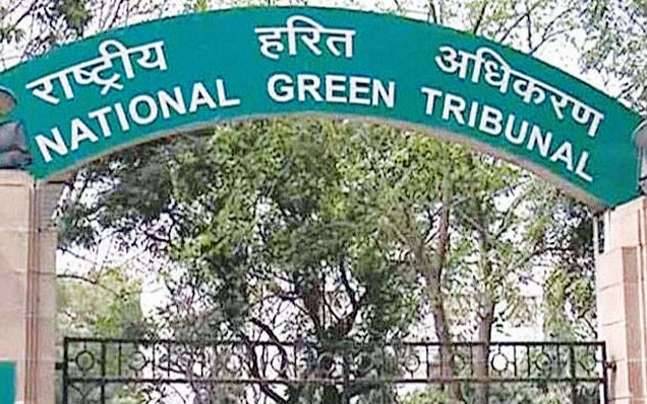One constant theme of 2017 has been the seemingly deliberate attempts to attack rites and observances of Hindu community in this nation. If last year saw Bihar banning Hawans to prevent fire accidents, this year saw a ‘great leap forward’ in unmatched eccentricities and idiosyncrasies of powers that be. If you thought banning firecrackers to contain pollution in the nation capital was a whimsical decision, the National Green Tribunal has now decreed that no bells should be tolled, nor Mantras chanted at Amarnath shrine to prevent avalanches in the ecologically sensitive area. Given the recent state of affairs in the country, Hindu community should consider themselves fortunate that the NGT did not outrightly ban worship at the holy shrine to prevent ecological degradation of the site. This Tughlaqi Farman of NGT smacks of contemptuous disdain for Hindu rituals and traditions. It also reeks of typical bureaucratic incompetence that always seeks to find the easiest solution rather than attempt for the logical one.
Now that the NGT has so decreed, one must hold up a mirror before NGT and ask it to prove how its equally idiosyncratic decision on banning firecrackers prevented worsening of air quality in Delhi/NCR region. A cursory look at data would prove that banning of firecrackers had no impact on Delhi’s air quality. This is something that even a layman could have predicted. Studies have consistently shown that construction dust, factory emissions, vehicular pollution and weather change are some of the main reasons behind Delhi’s Air quality woes. Why then, did the NGT mandate the banning of firecrackers in the national capital? Perhaps, only because they were being egged on by maliciously inclined NGOs and because the NGT wanted to be seen as doing at least something. Also, it is far easier to target Diwali than say, Christmas or New year’s- other festivals that witness some form of bursting of crackers. Our national definition of secularism praises any attack on Hindu culture as ‘progressive’ while any changes in minority customs are labelled as ‘intolerance’. It is pertinent to note that the NGT is yet to issue any dictums on noise pollution emanating from Azans at Mosques.
1963 in what was then South Vietnam provides an interesting analogy. South Vietnam was an overwhelmingly Buddhist majority country, ruled by a Catholic clique. The policy of the state appeared to be one where Catholicism was encouraged, and expressions of Buddhist faith were suppressed. In 1963, the government came up with an odd decree forbidding the display of the Yellow Buddhist flag on what we in India know as Buddha Poornima. Only a week earlier, the government had encouraged Christians to display the White Vatican flag for a celebration. There were demonstrations by Buddhists and repressive measures by the government. Buddhist protestors were driven to the wall by a government that forbade them from freely practising their faith and reacted violently if there were protests. Finally, it took a Buddhist monk by the name of Thích Quảng Đức who appealed to the South Vietnamese leaders to implement religious equality and then proceeded to immolate himself on a busy Saigon thoroughfare. The sight of a senior Buddhist monk, who maintained composure and dignity even as flames consumed him, provided the icon to a revolution that swept aside the Catholic clique in that country later that year.
It seems that powers that be are testing the patience of Hindu community. They are, by their selective proclamations and outrages forcing even the historically liberal Hindu community to feel as though they are under siege. Any expression of Hindu culture and tradition is scoffed at, ridiculed and when that doesn’t result in people abandoning their culture, attempts are made to ban it under the guise of ‘environmental protection’ and other convenient liberal façades. From NYT ridiculing Saarees as expression of Hindu Nationalism to Saraswati Puja being banned in schools in West Bengal, it is not surprising that ‘Secularism’ has become the most abused word in Indian political lexicon. Far from it being identified as a national ideal, Secularism is reviled as another name for minority appeasement. Hindutva terror, Hindu Taliban, Intolerant India would figure in the list of our national discourse but any reference to ‘forced conversions’, ‘love jihad’ and ‘Islamic terror’ is deemed as an expression of intolerance by members of the majority community.
The NGT could have come up with practical solutions to deal with the ecology of a particularly sensitive spot in the Amarnath Shrine. It could have publicized concerns and sought solutions from the public. But it chose to ban mantras and Jaykaras because they may cause Avalanches!
Amarnath Shrine, one of the holiest shrine in Hindu tradition has witnessed terror attacks year after year. There have been violent protests and even demands by separatists to curb the Amarnath Yatra, ostensibly to protect the environment, and yet nothing has succeeded in dampening the enthusiasm of thousands of pilgrims who throng the holy shrine year after year. Only now, they would risk their lives for a glimpse of their God and yet be unable to mouth holy incantations or sing paens to his glory- because the NGT hath so decreed. No wonder that the whole ‘Hindus under siege’ narrative has been steadily gaining ground over the years.
